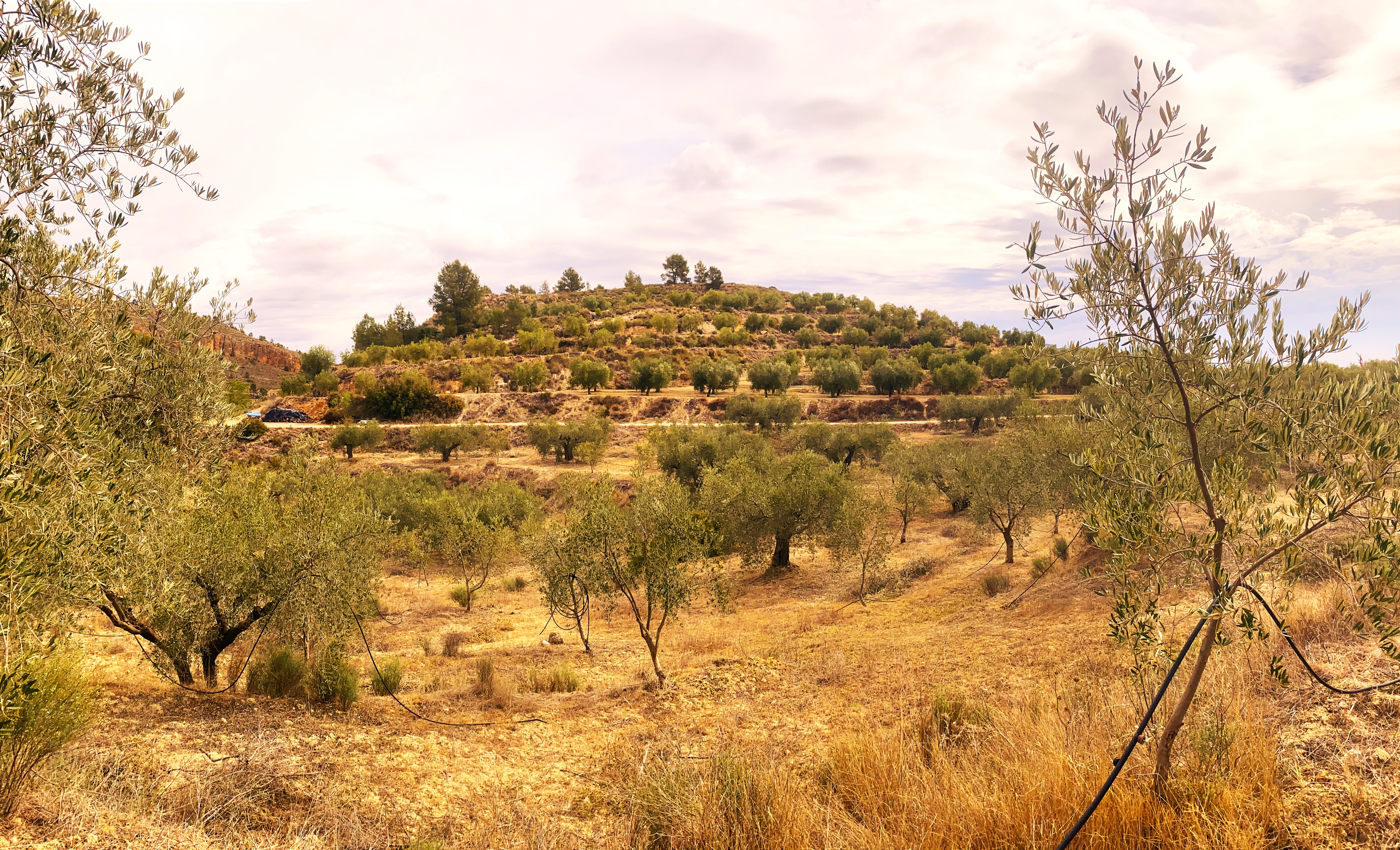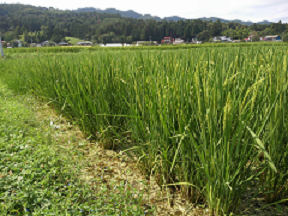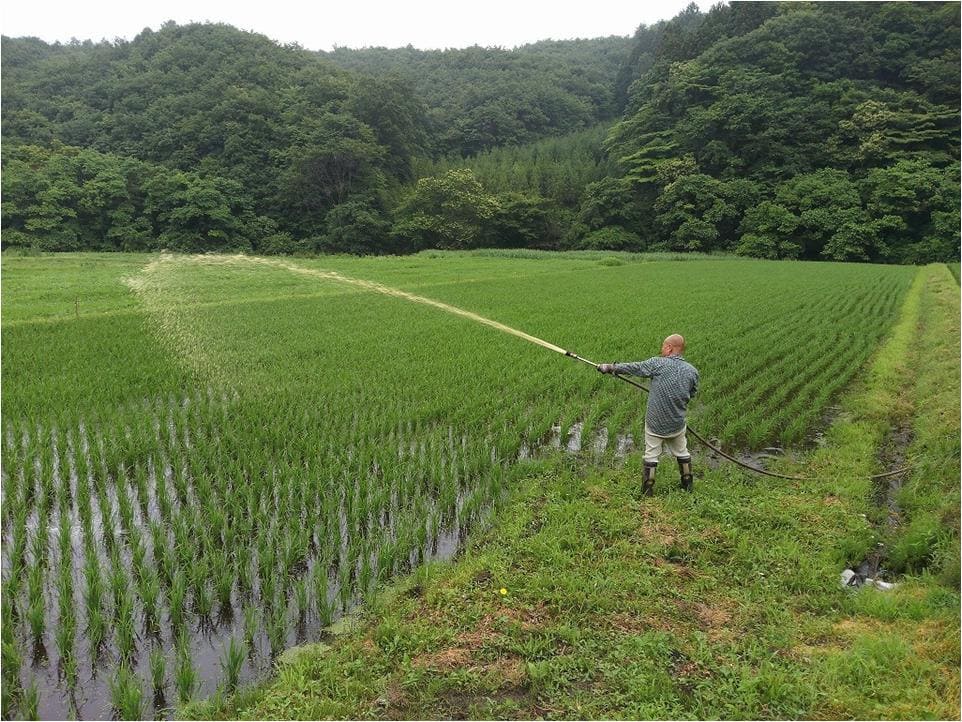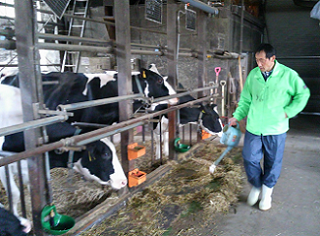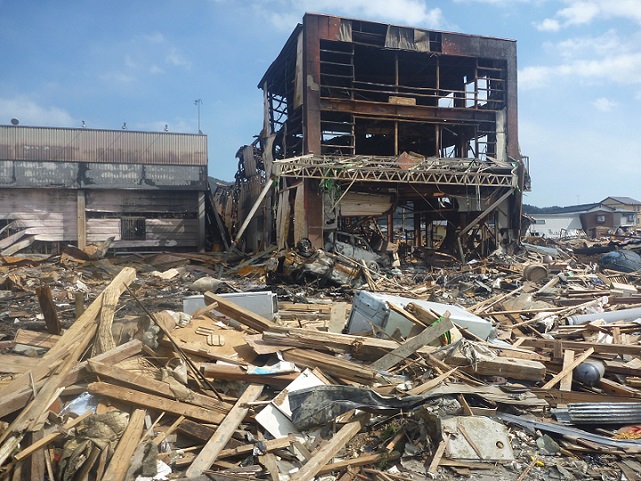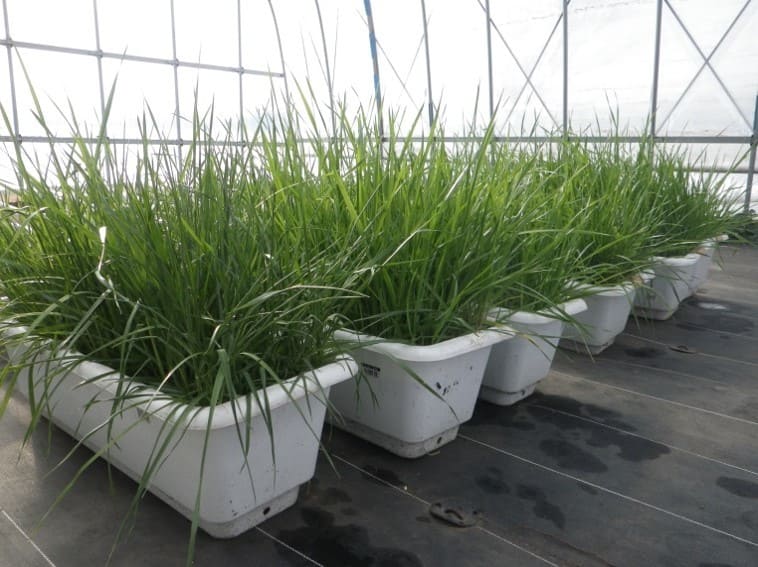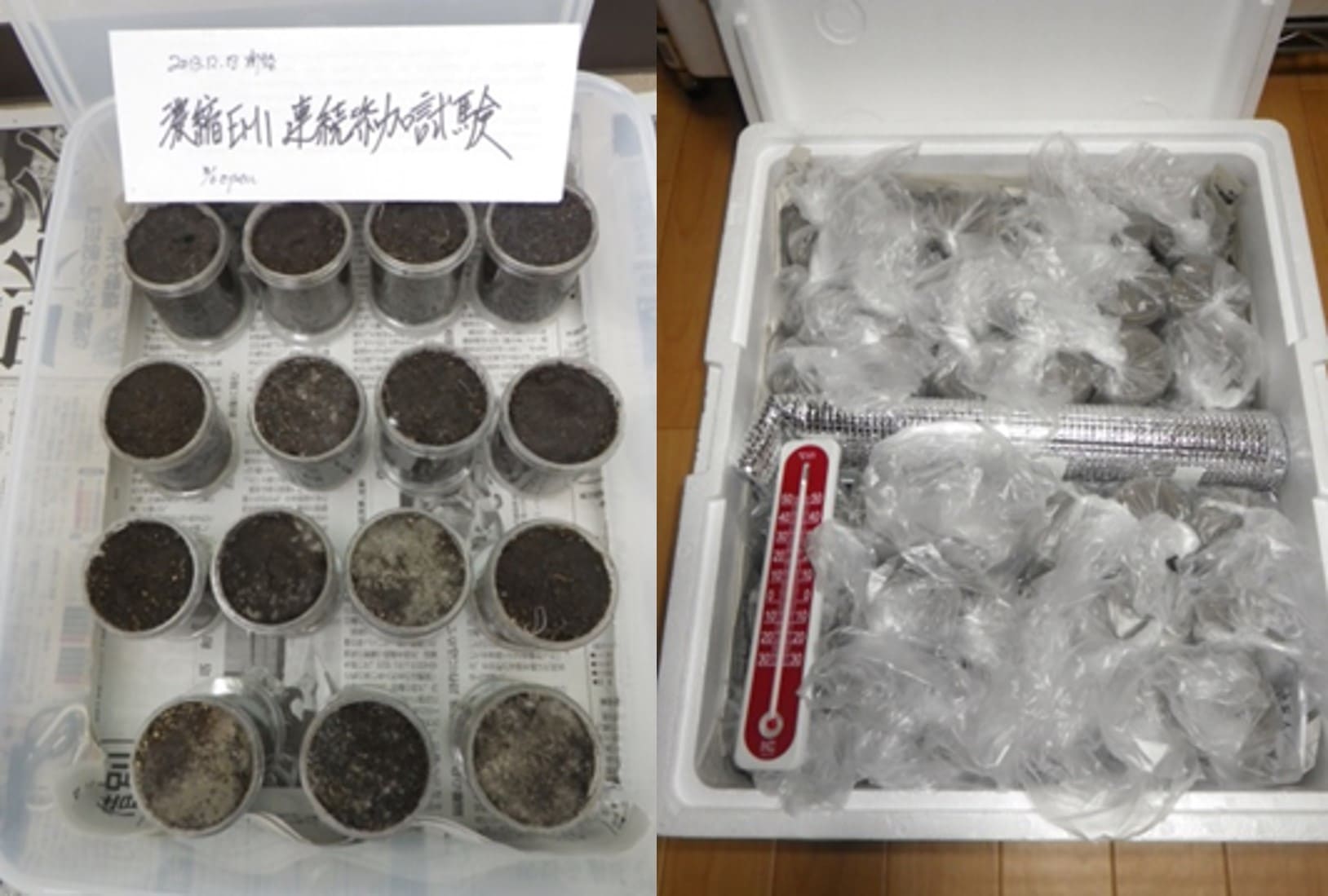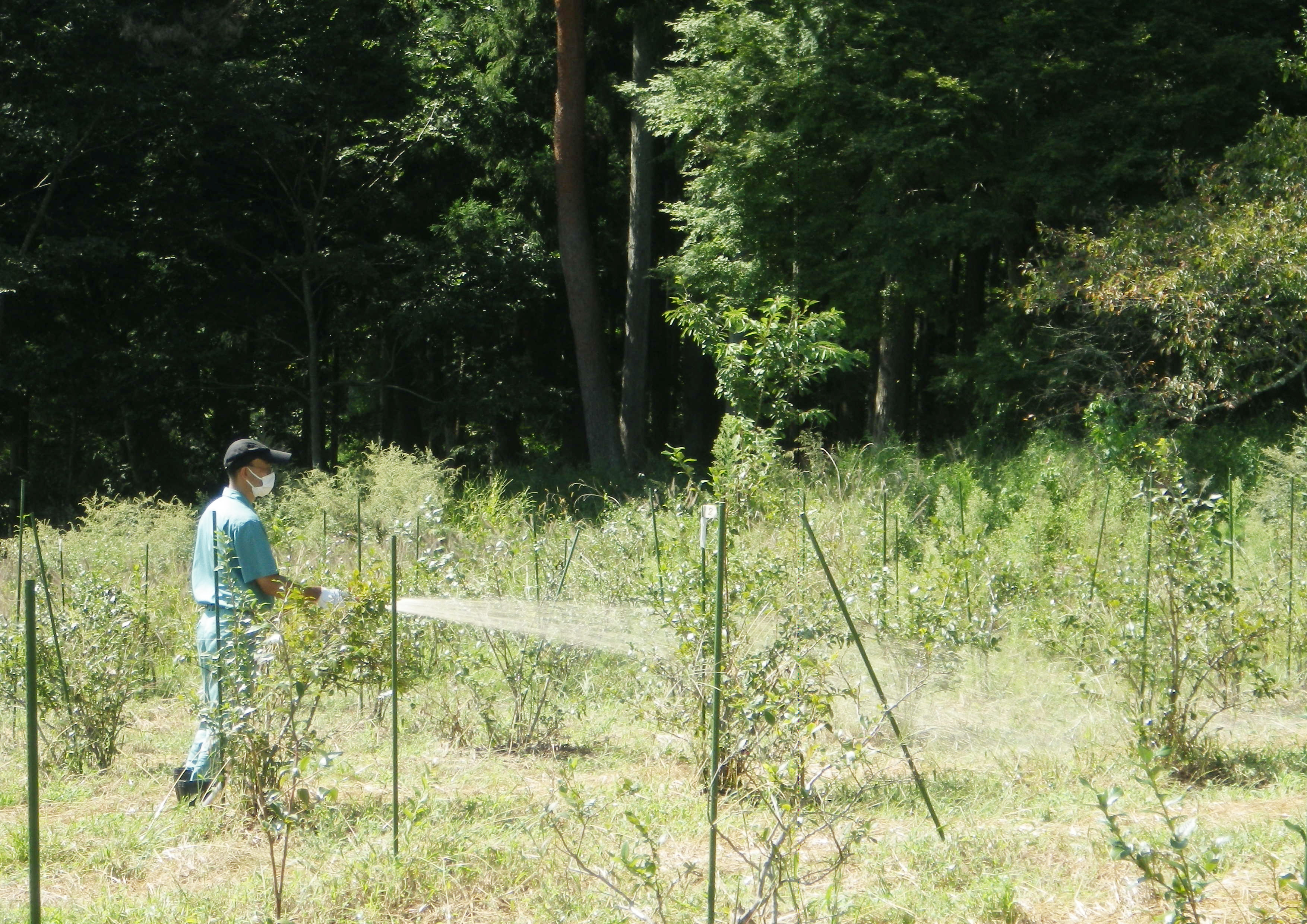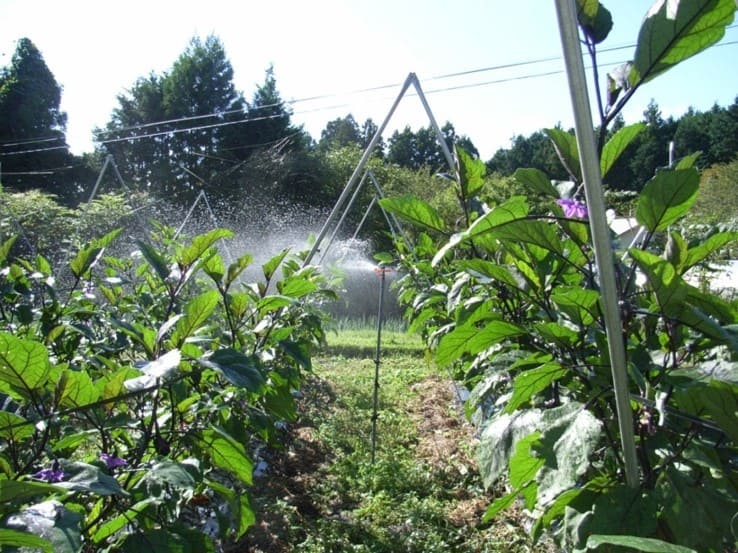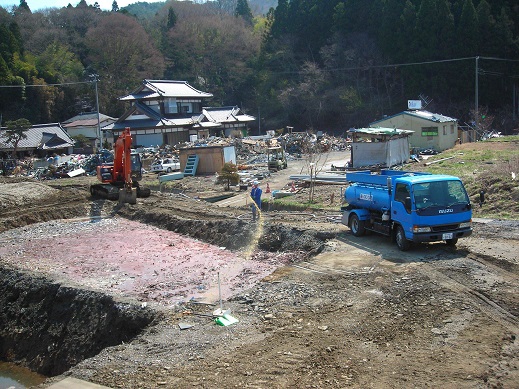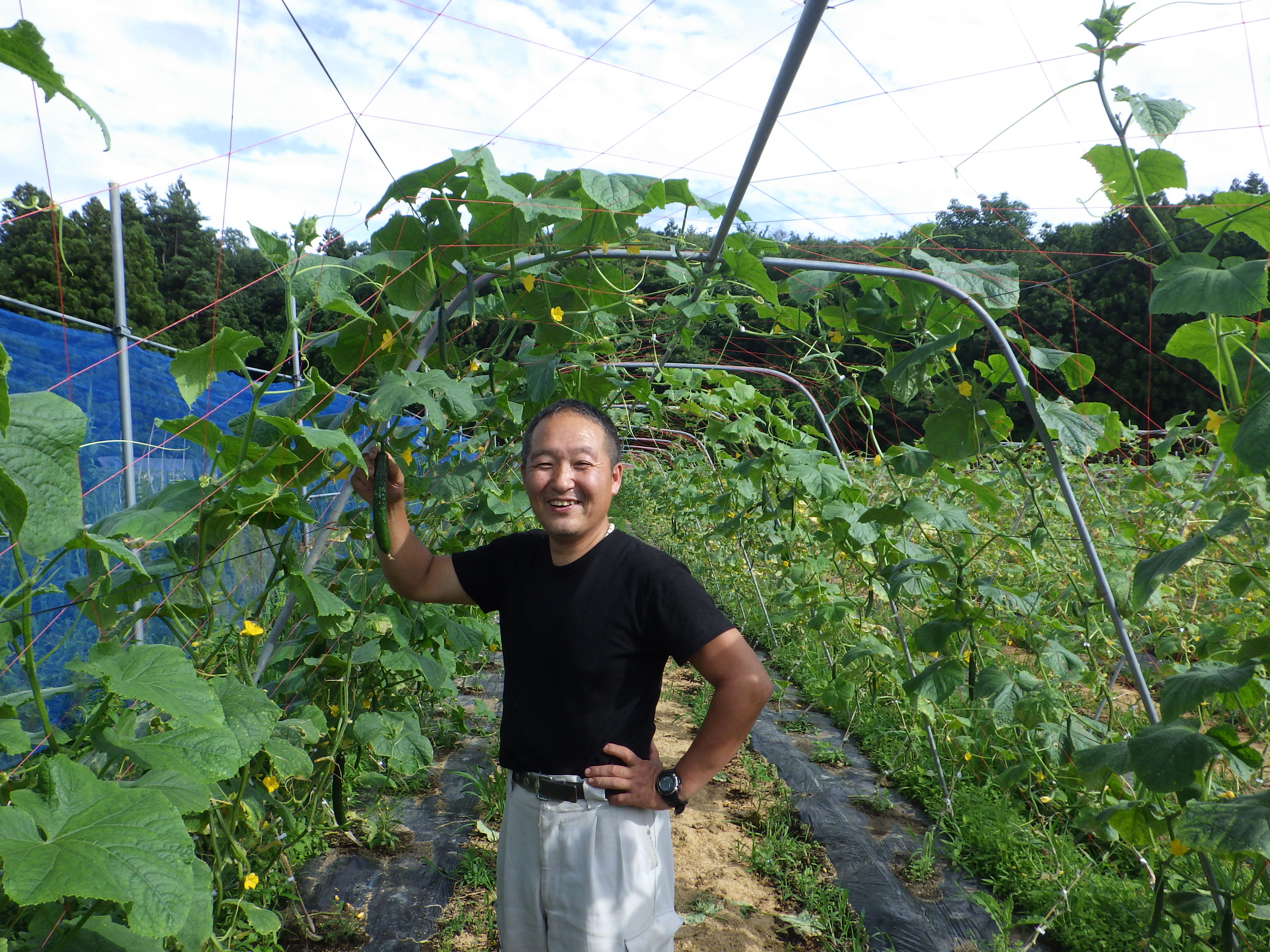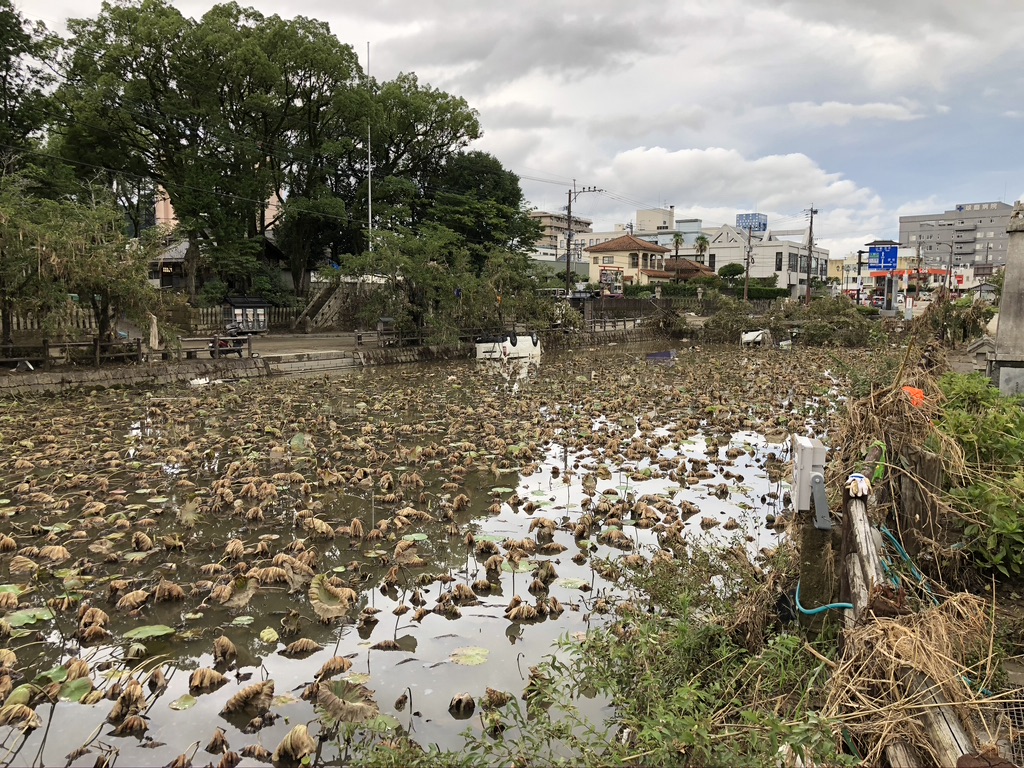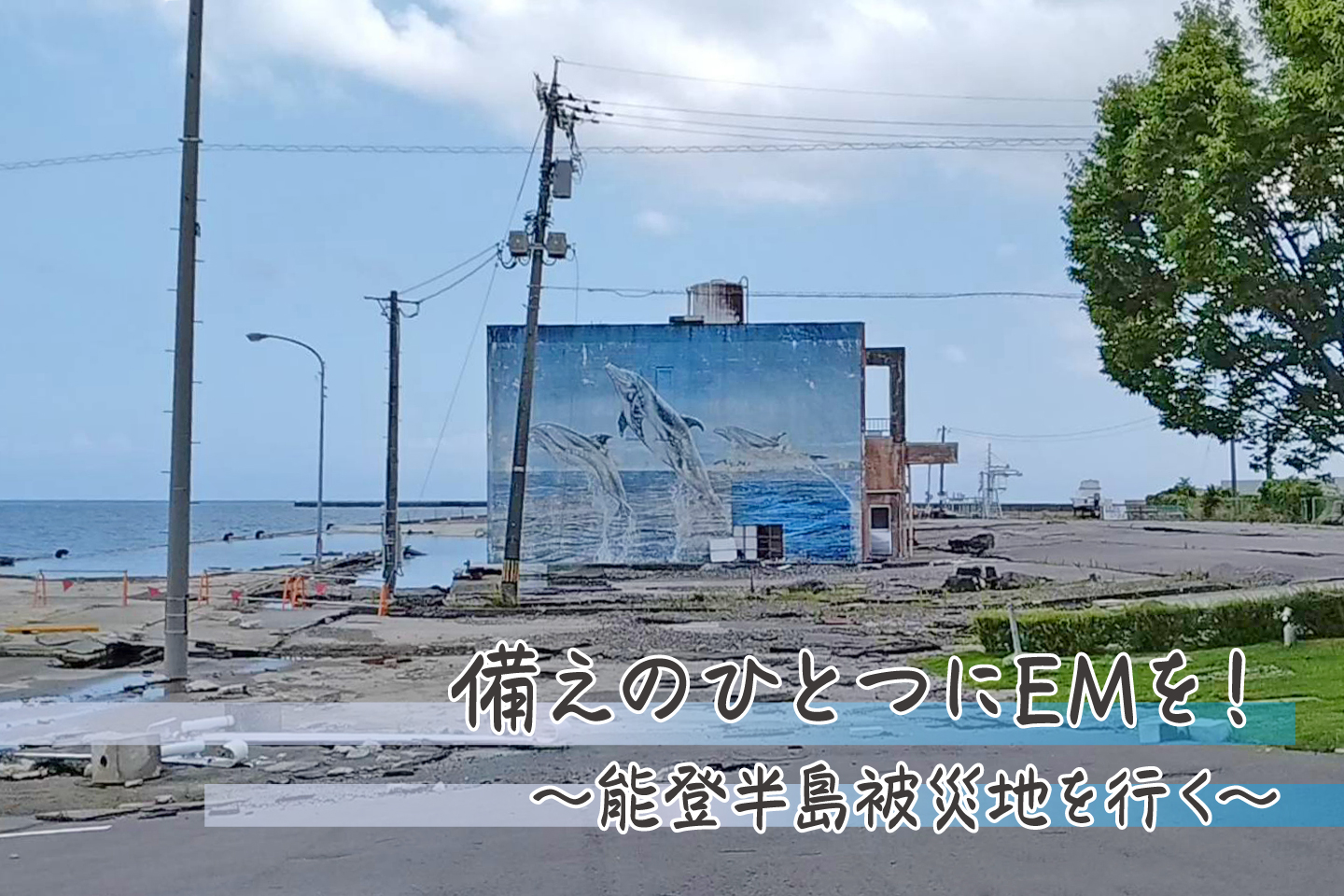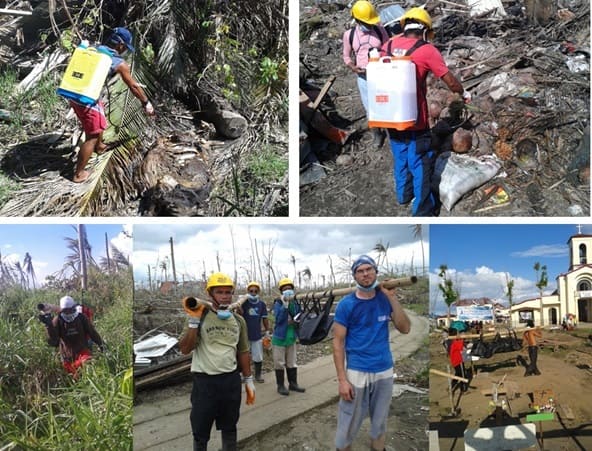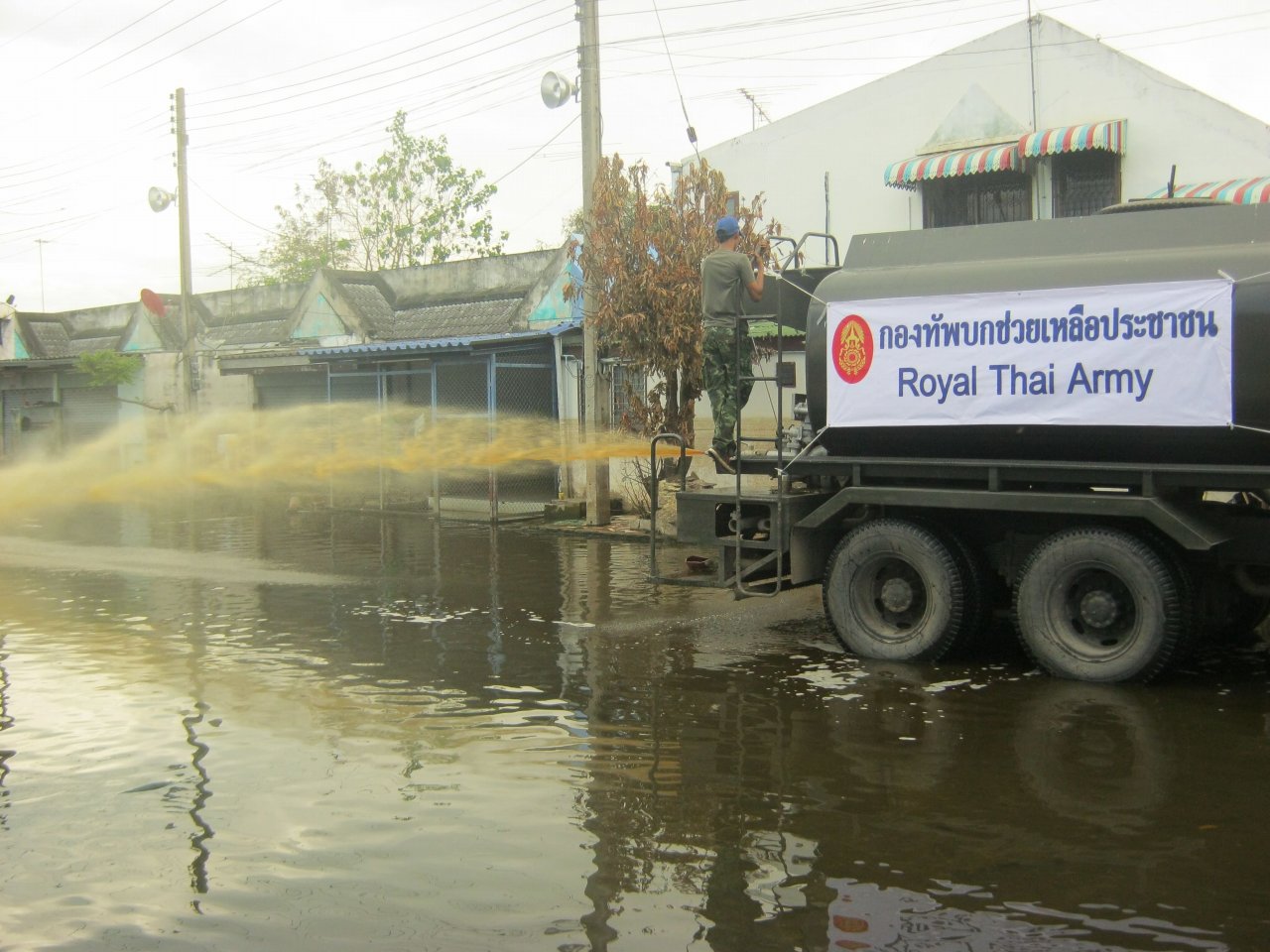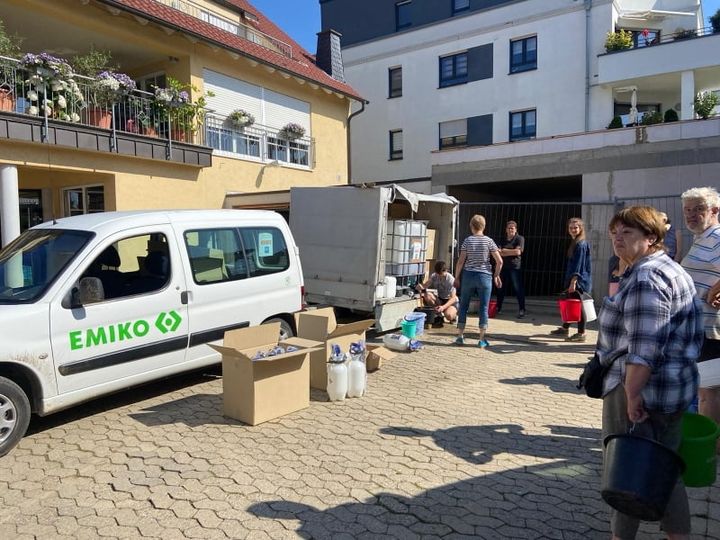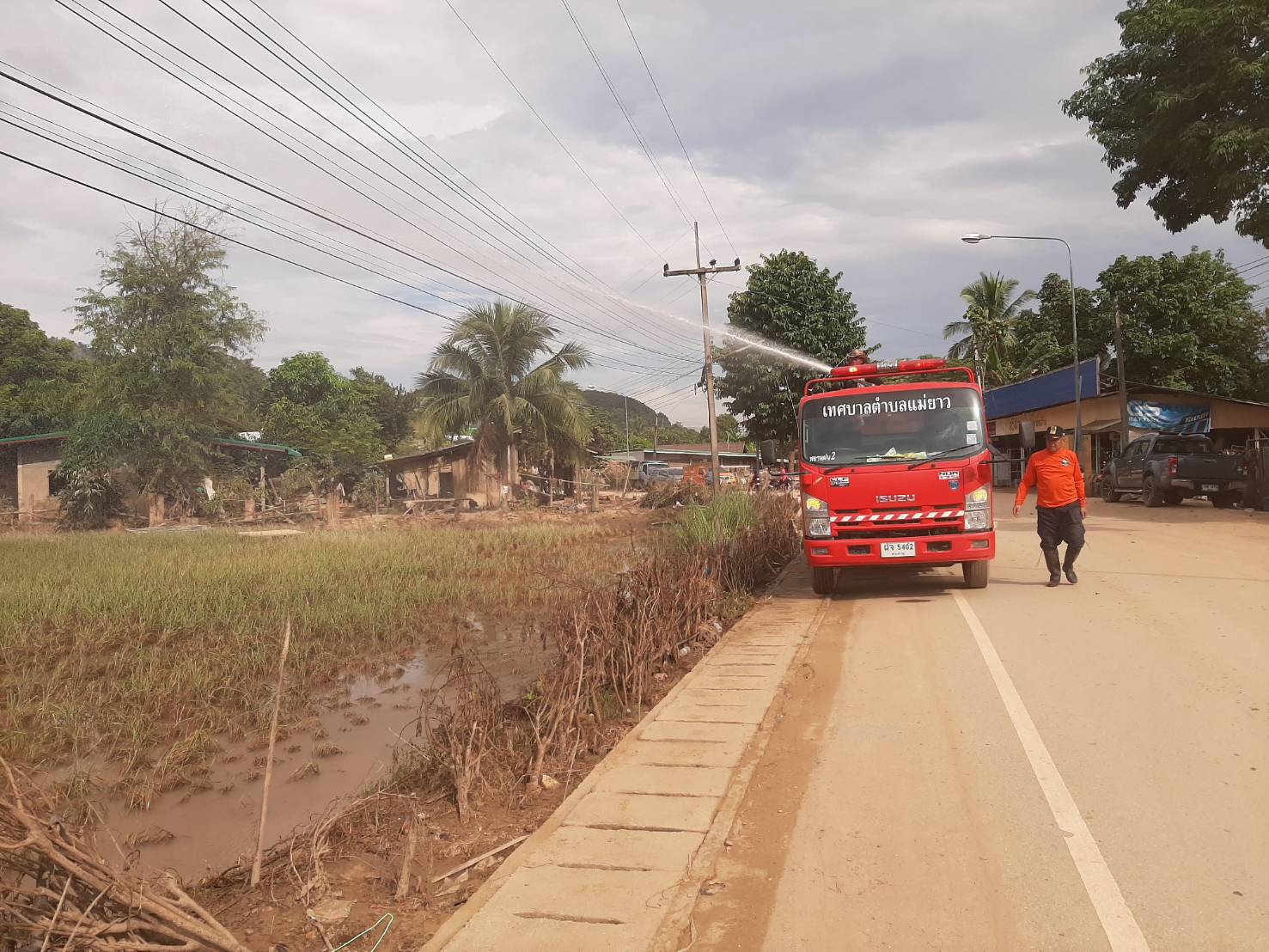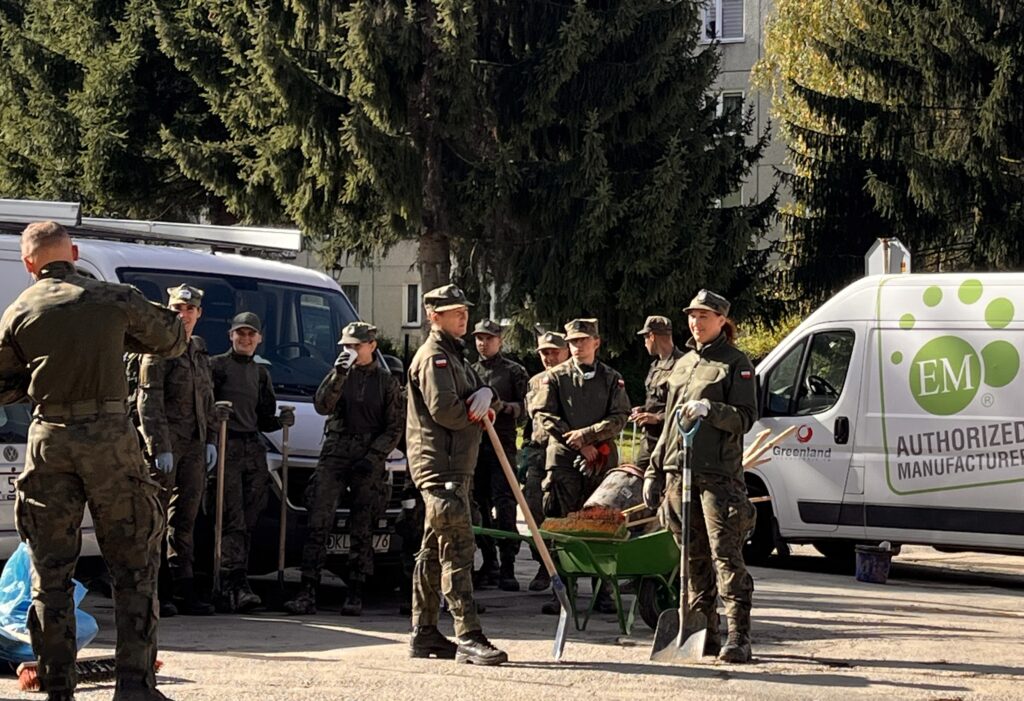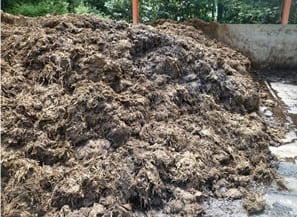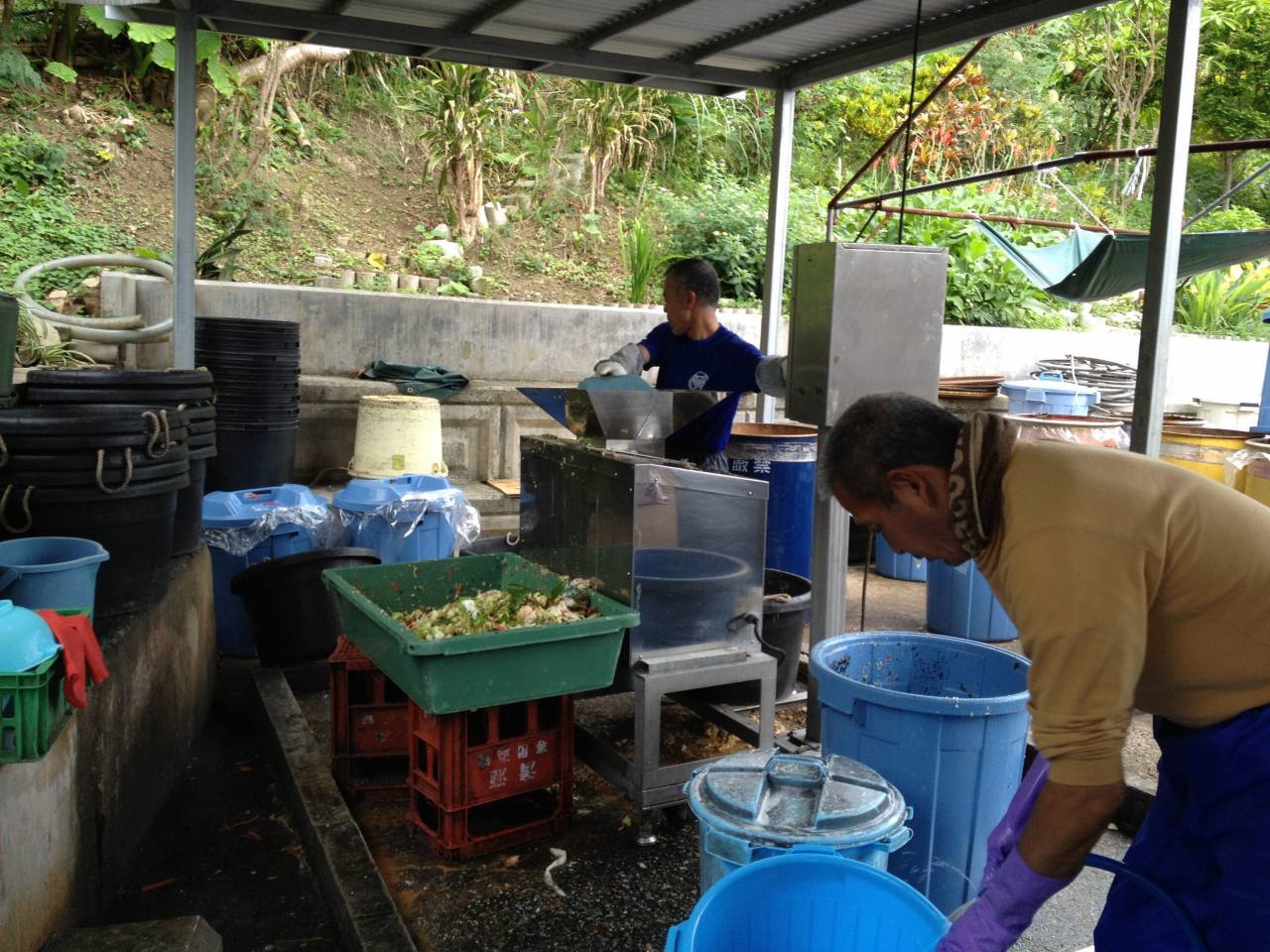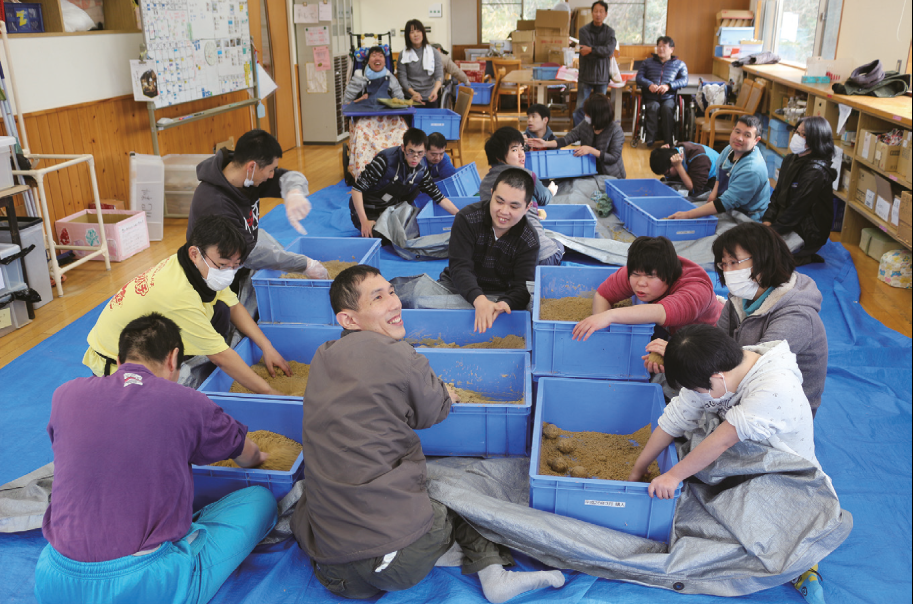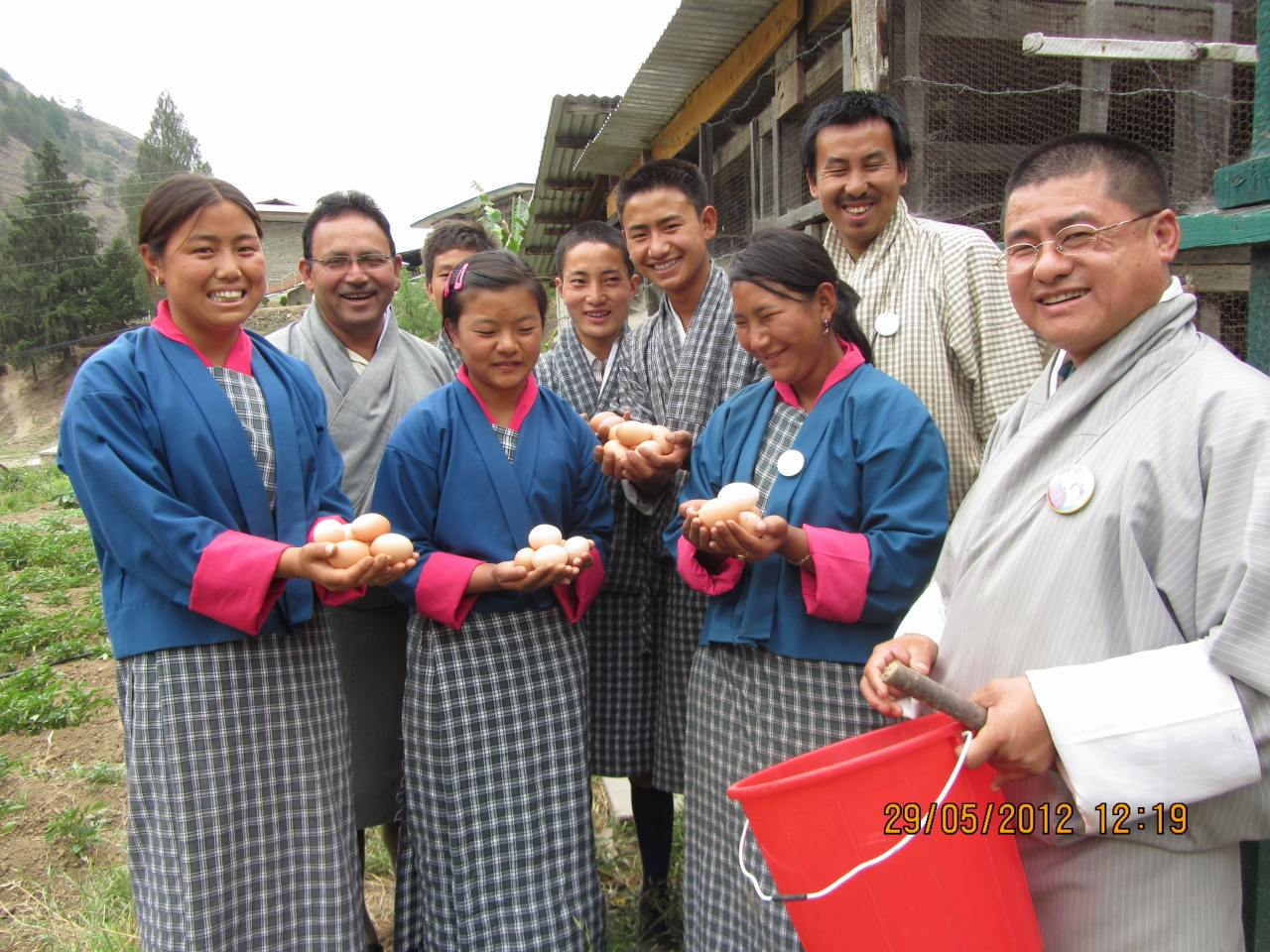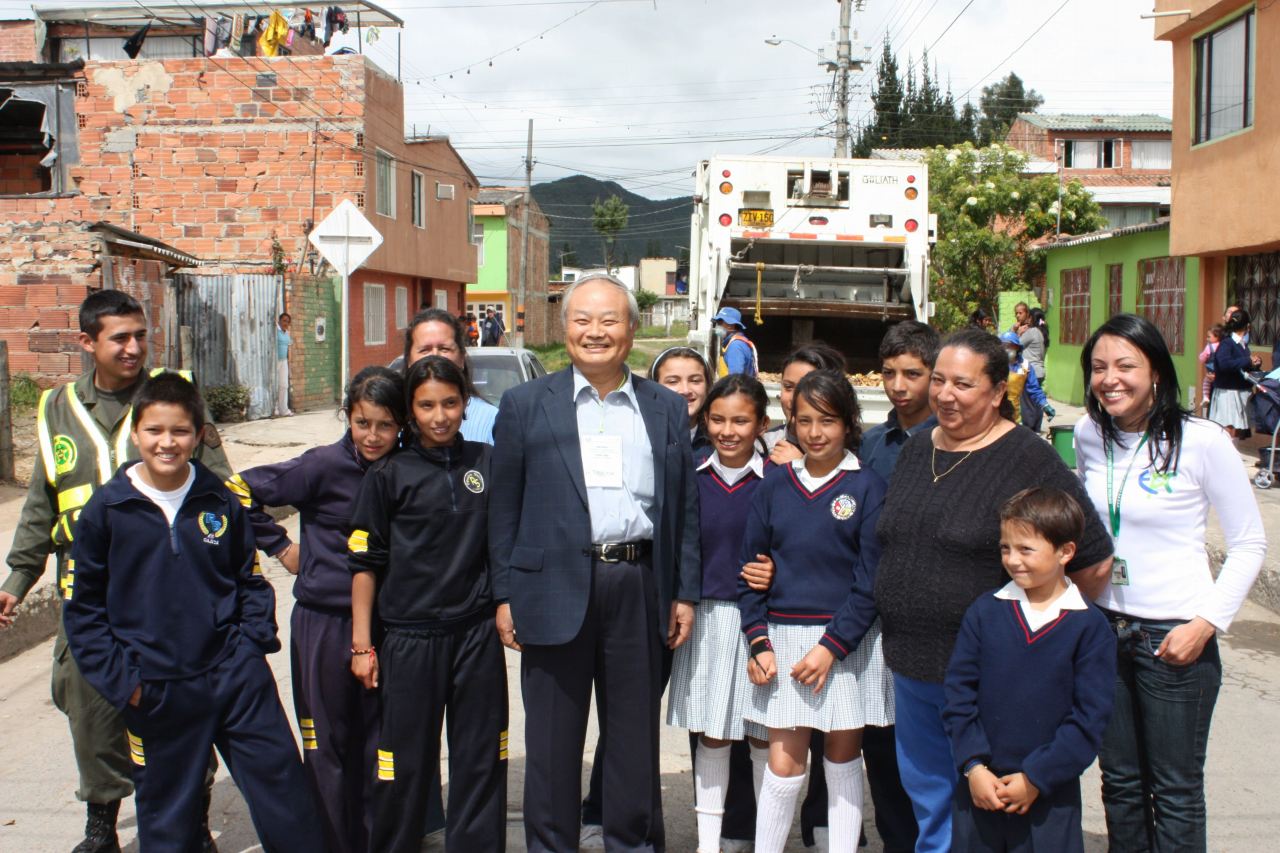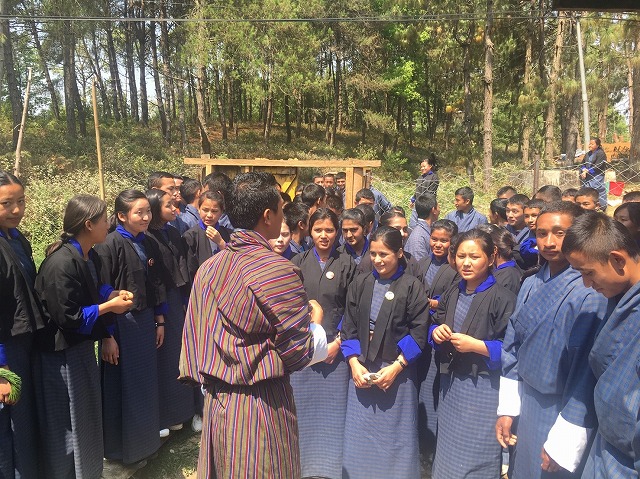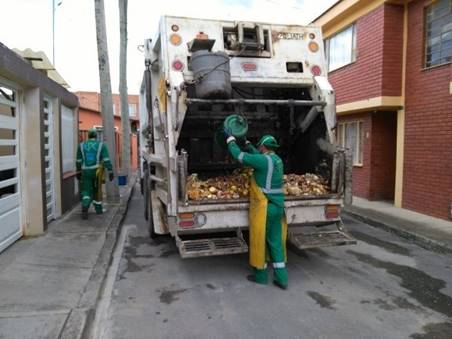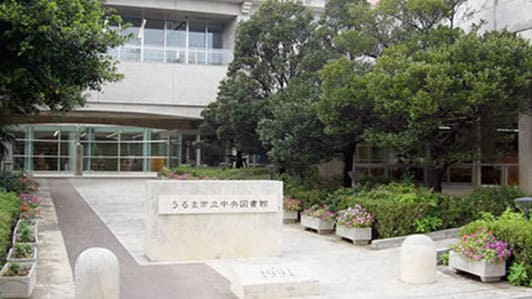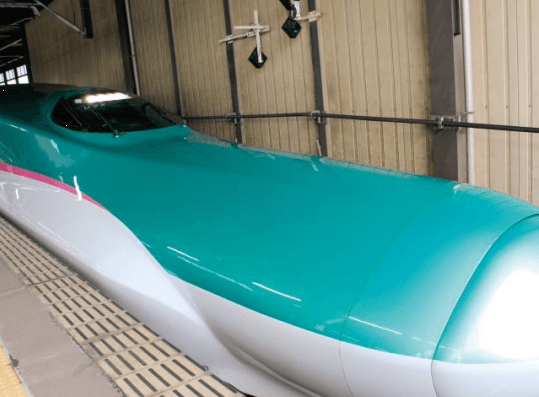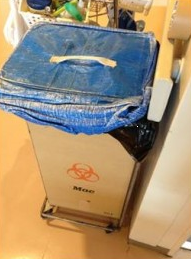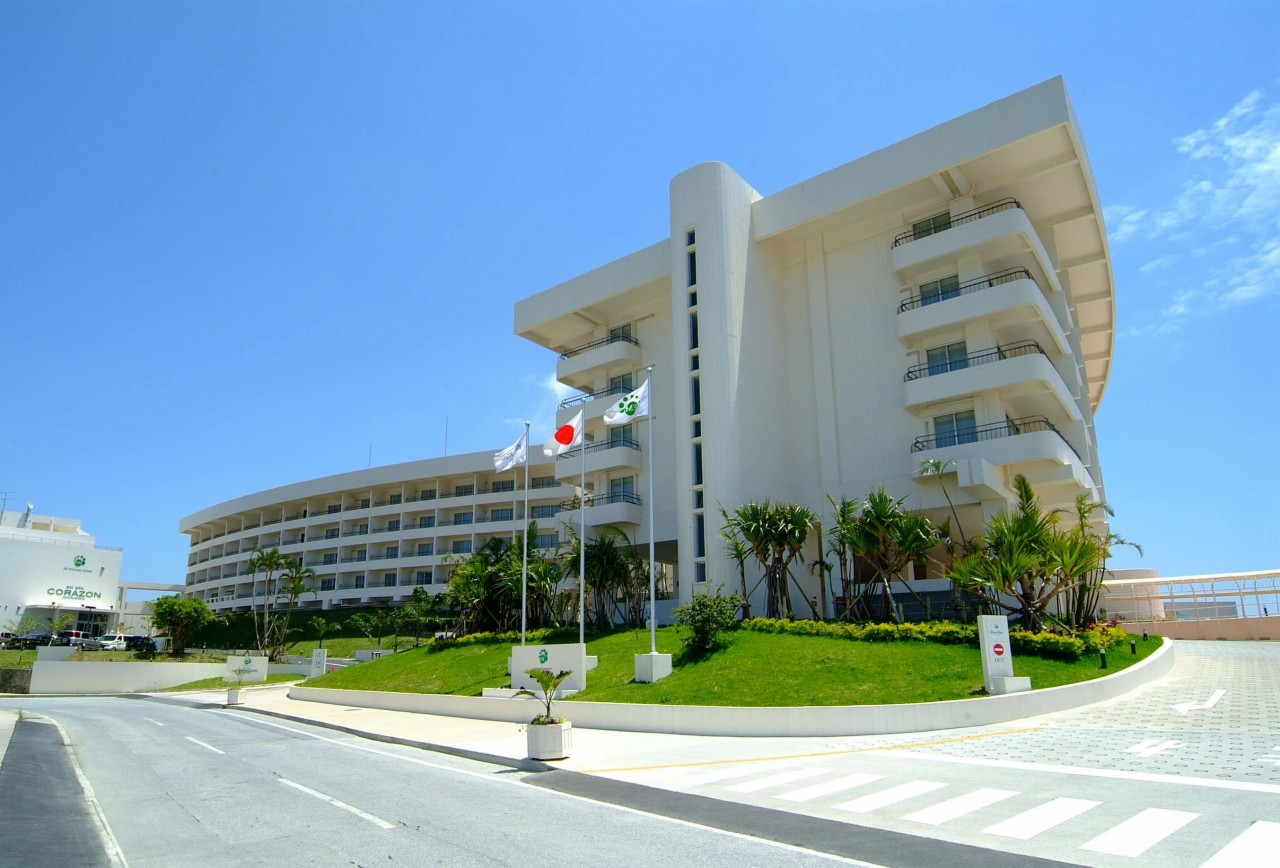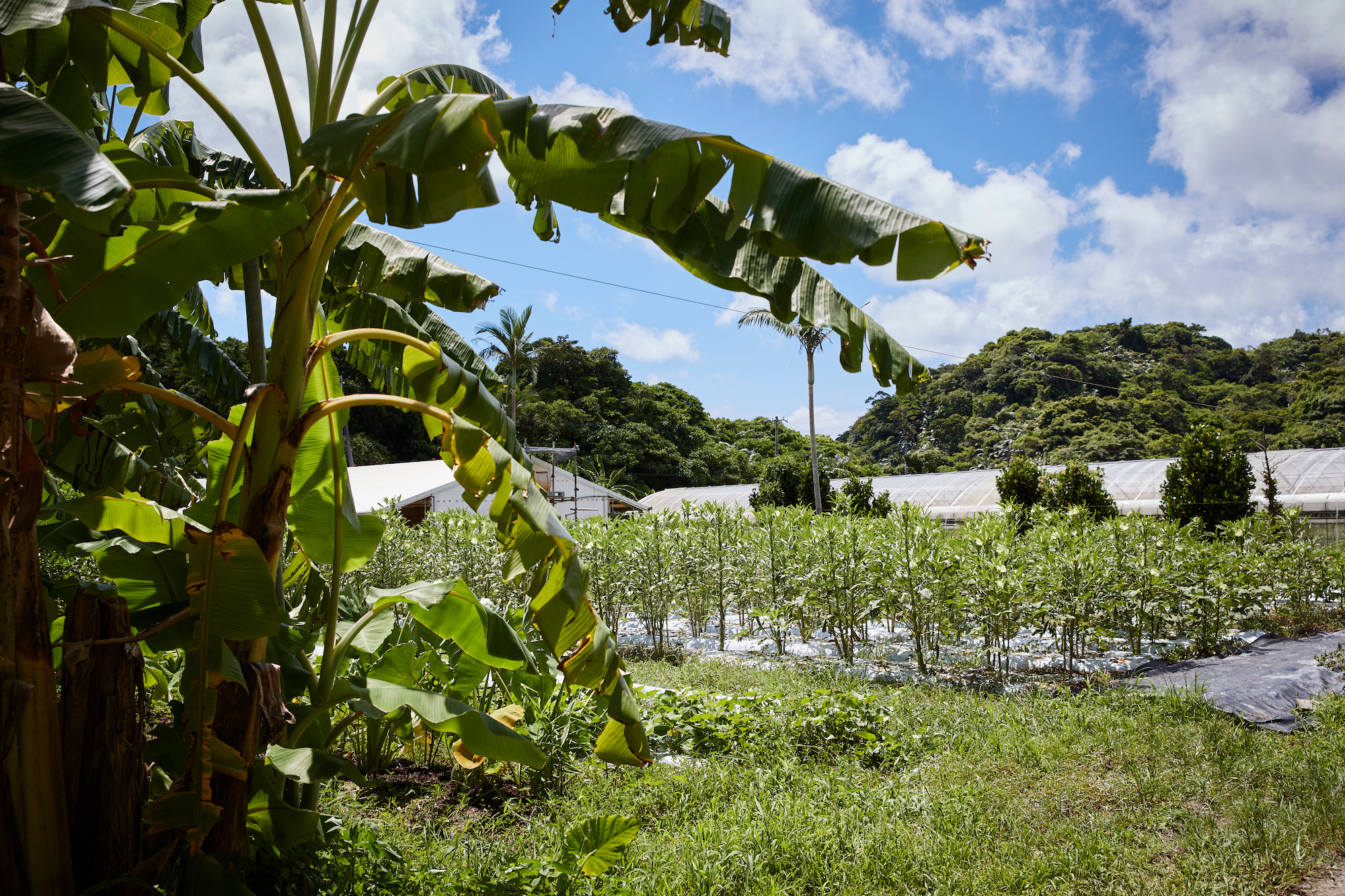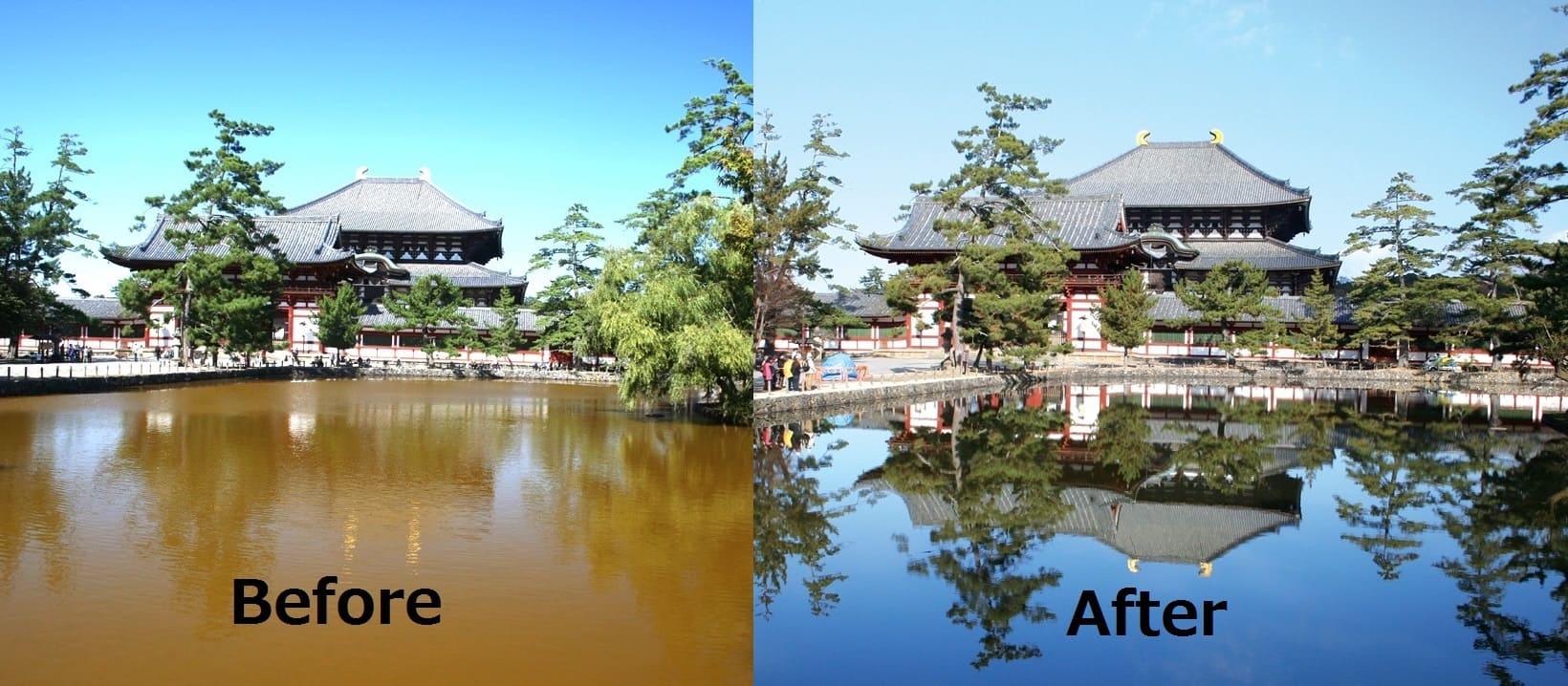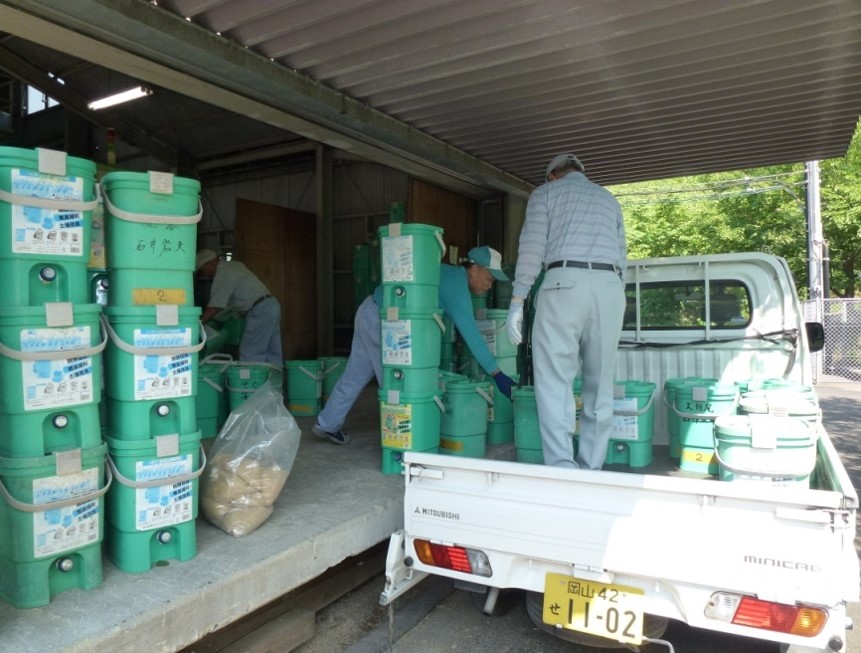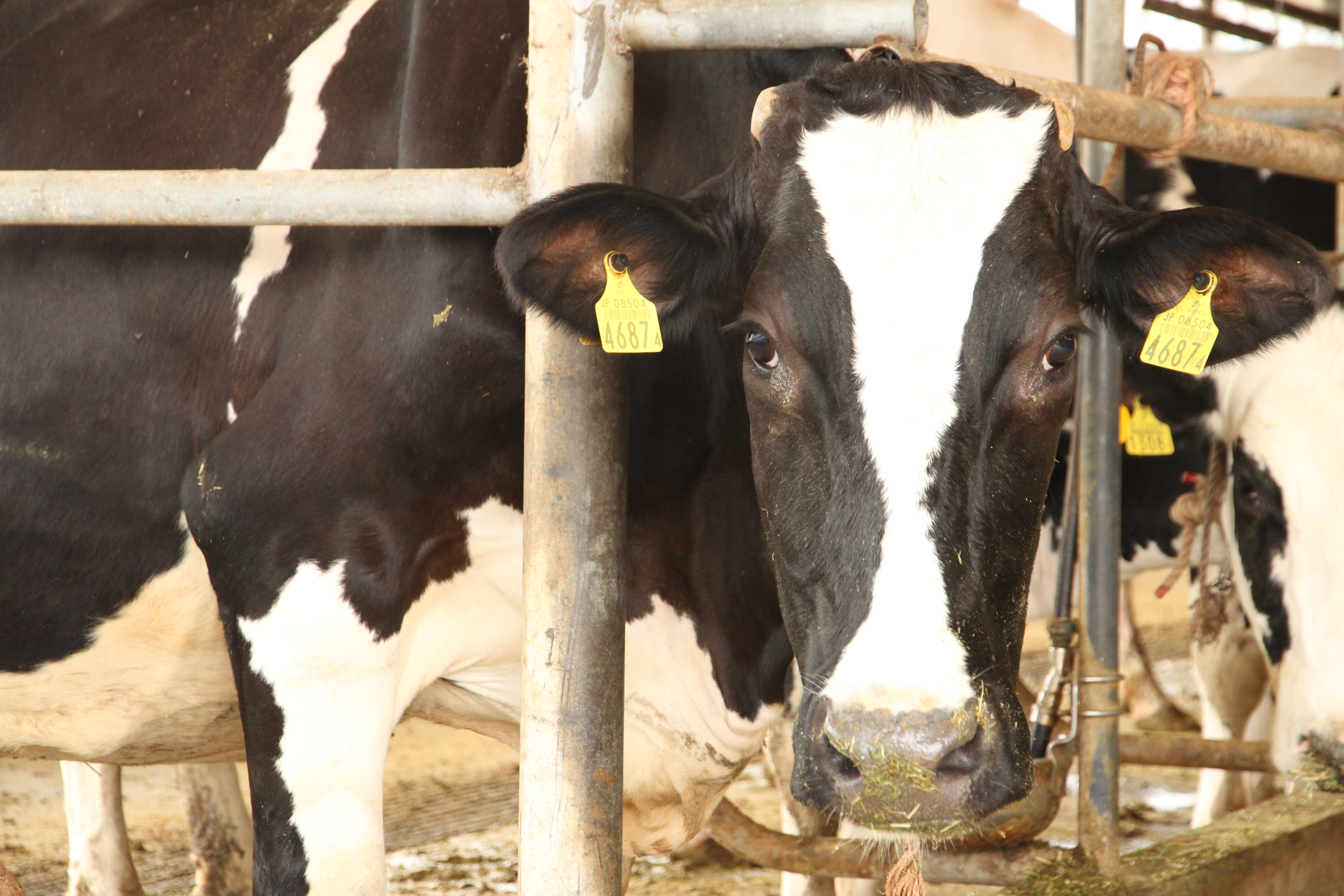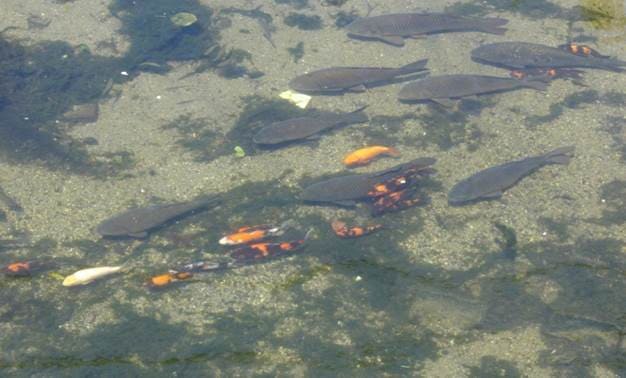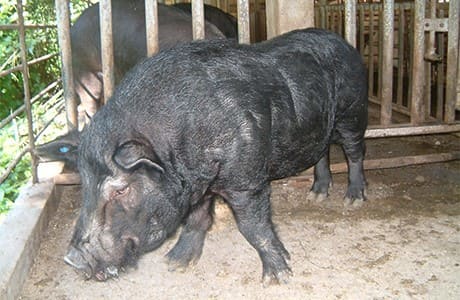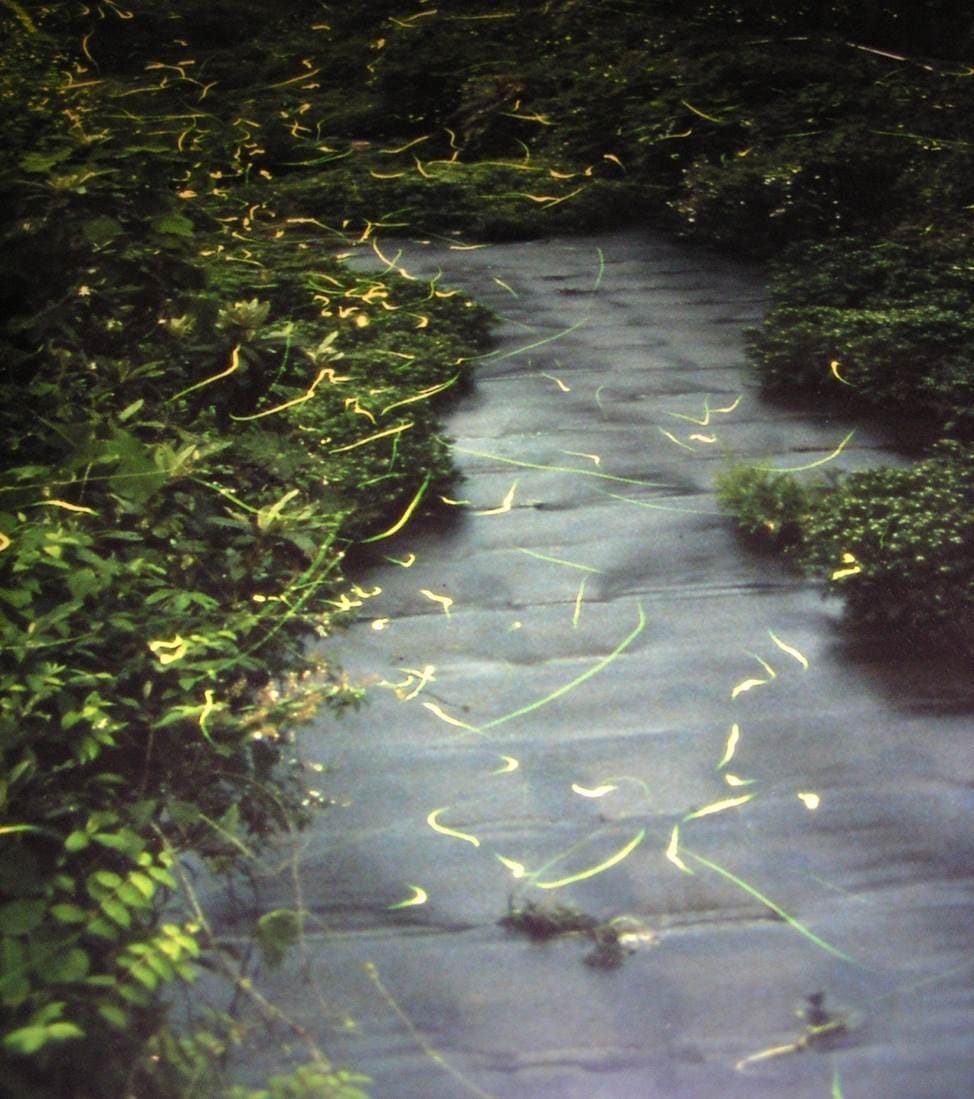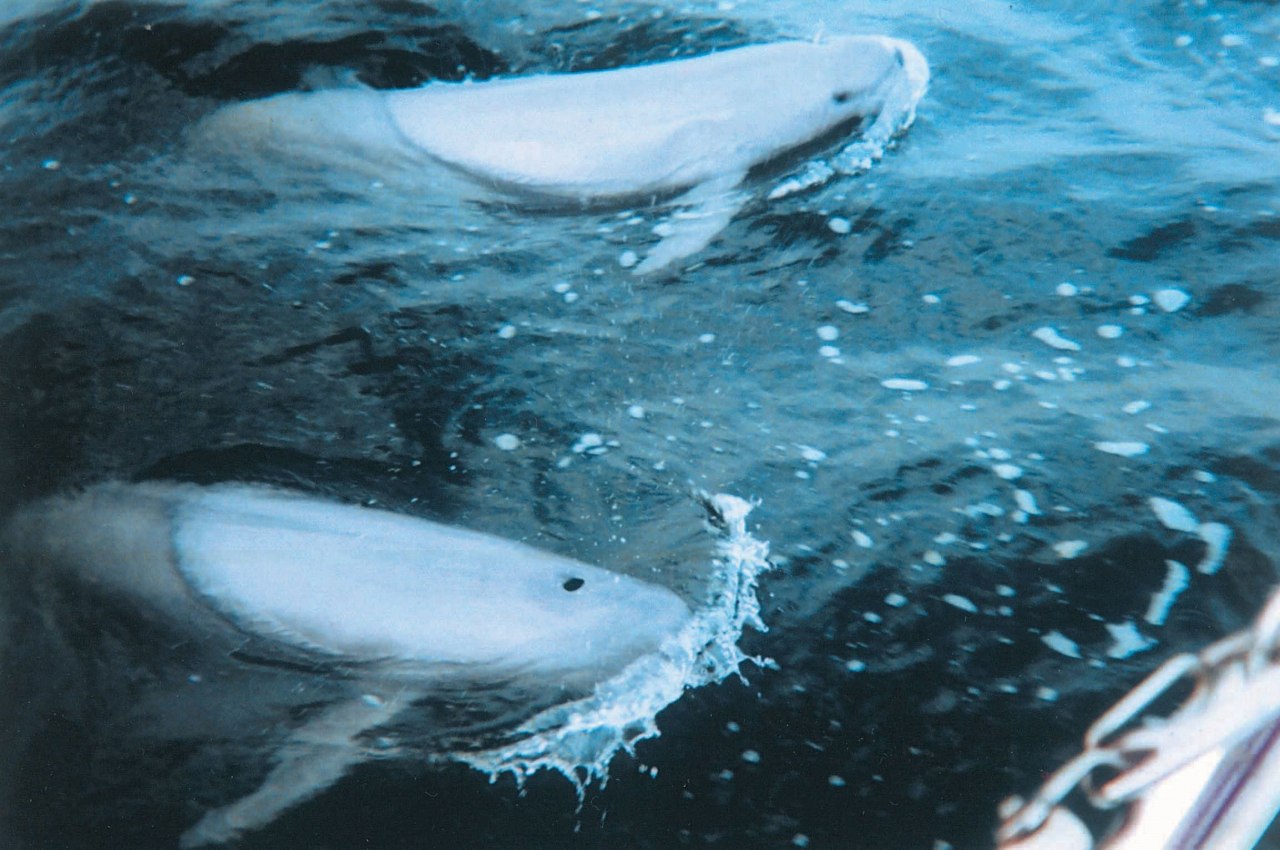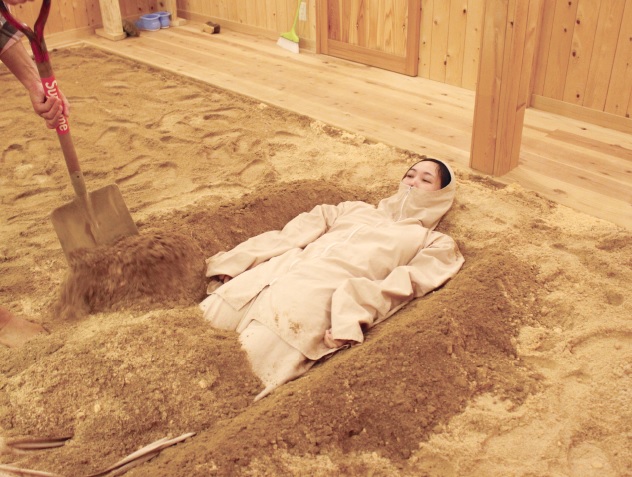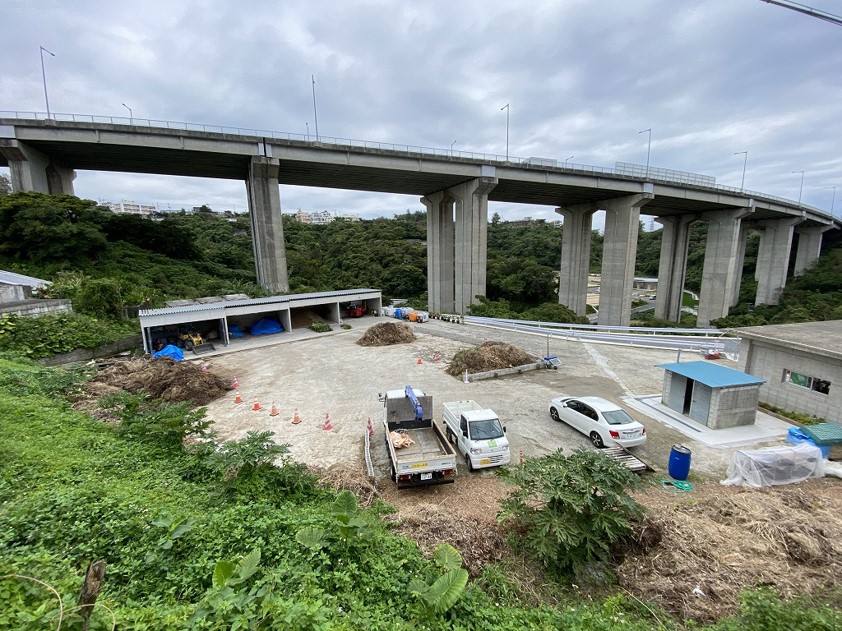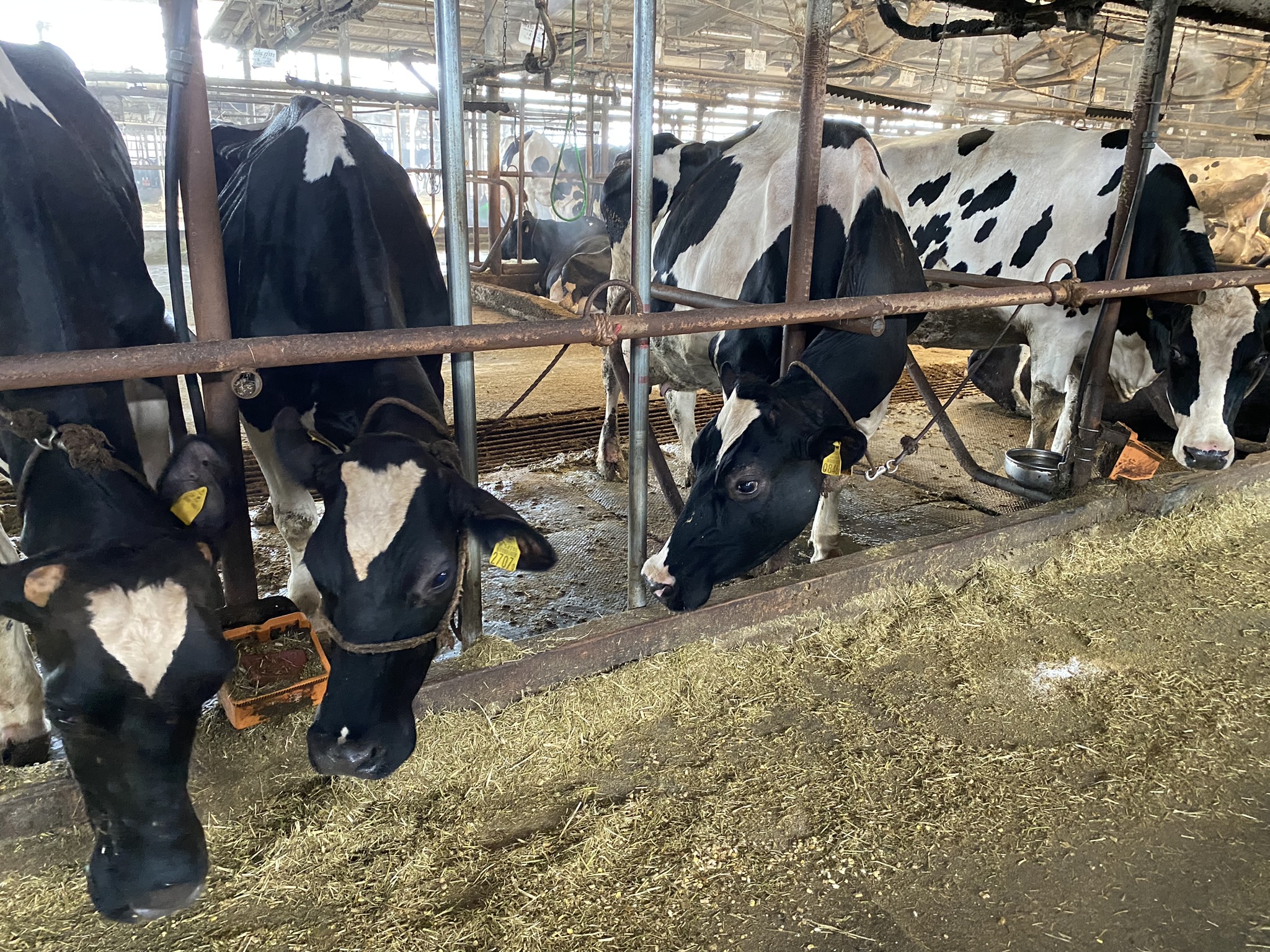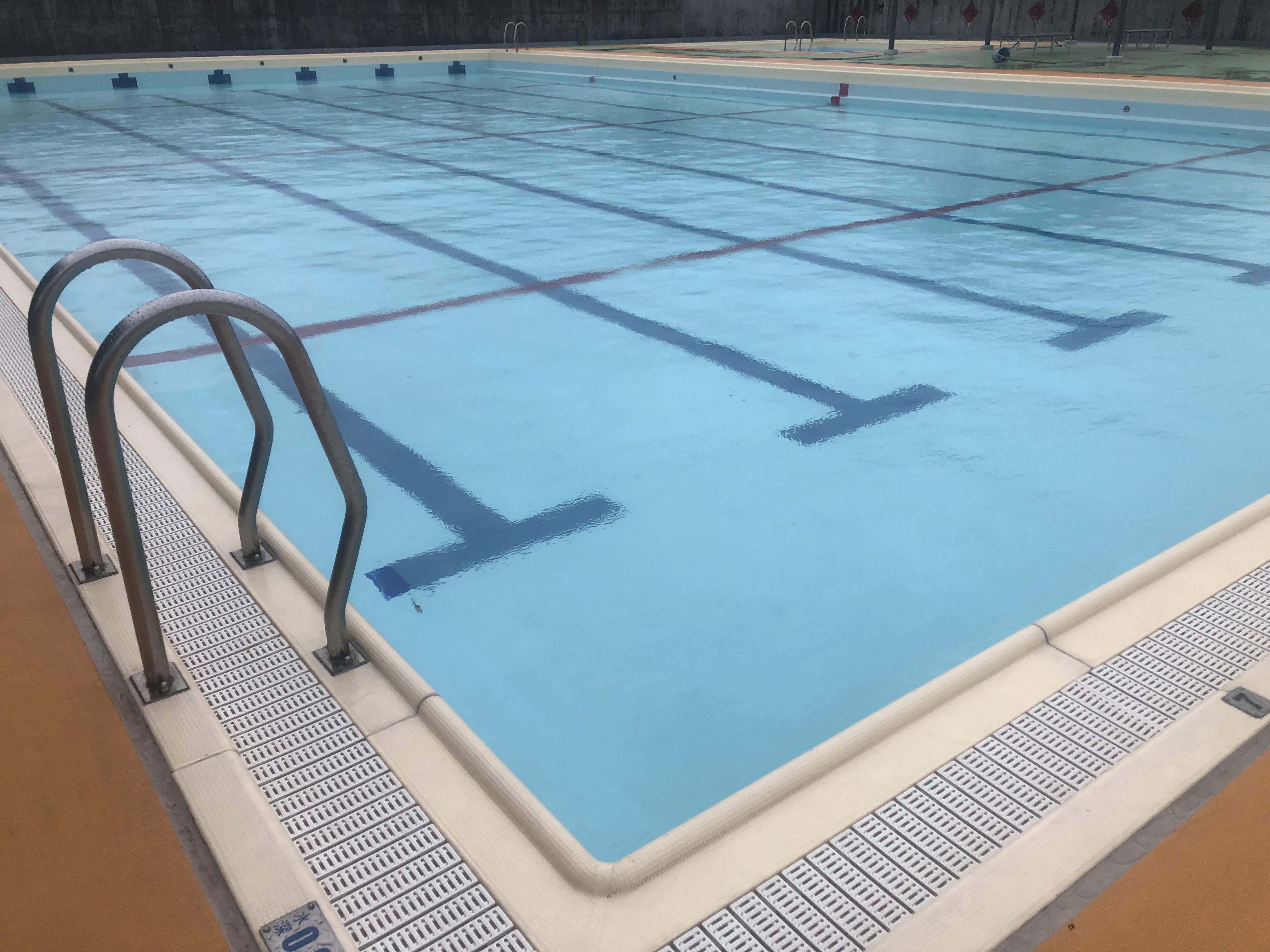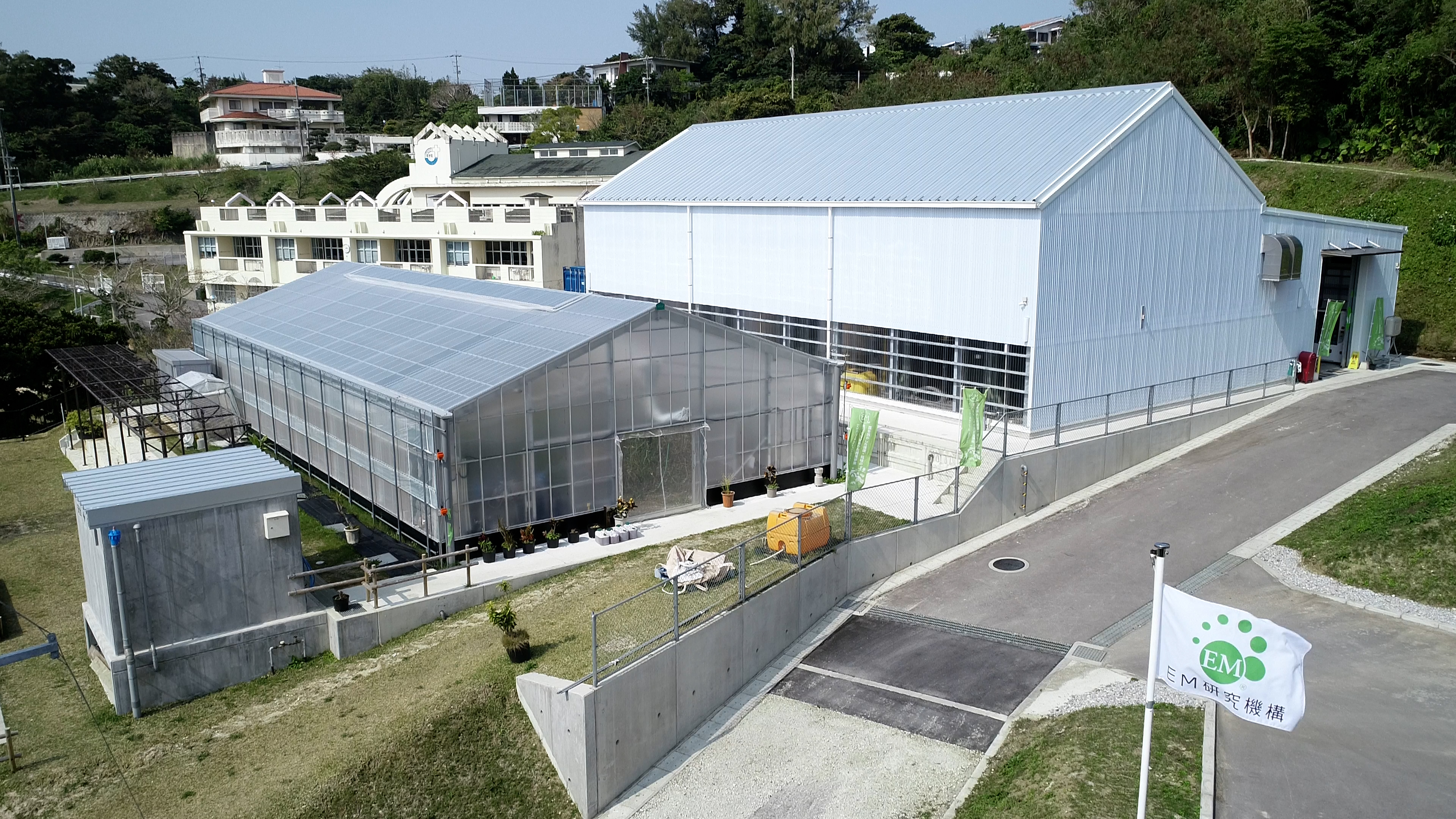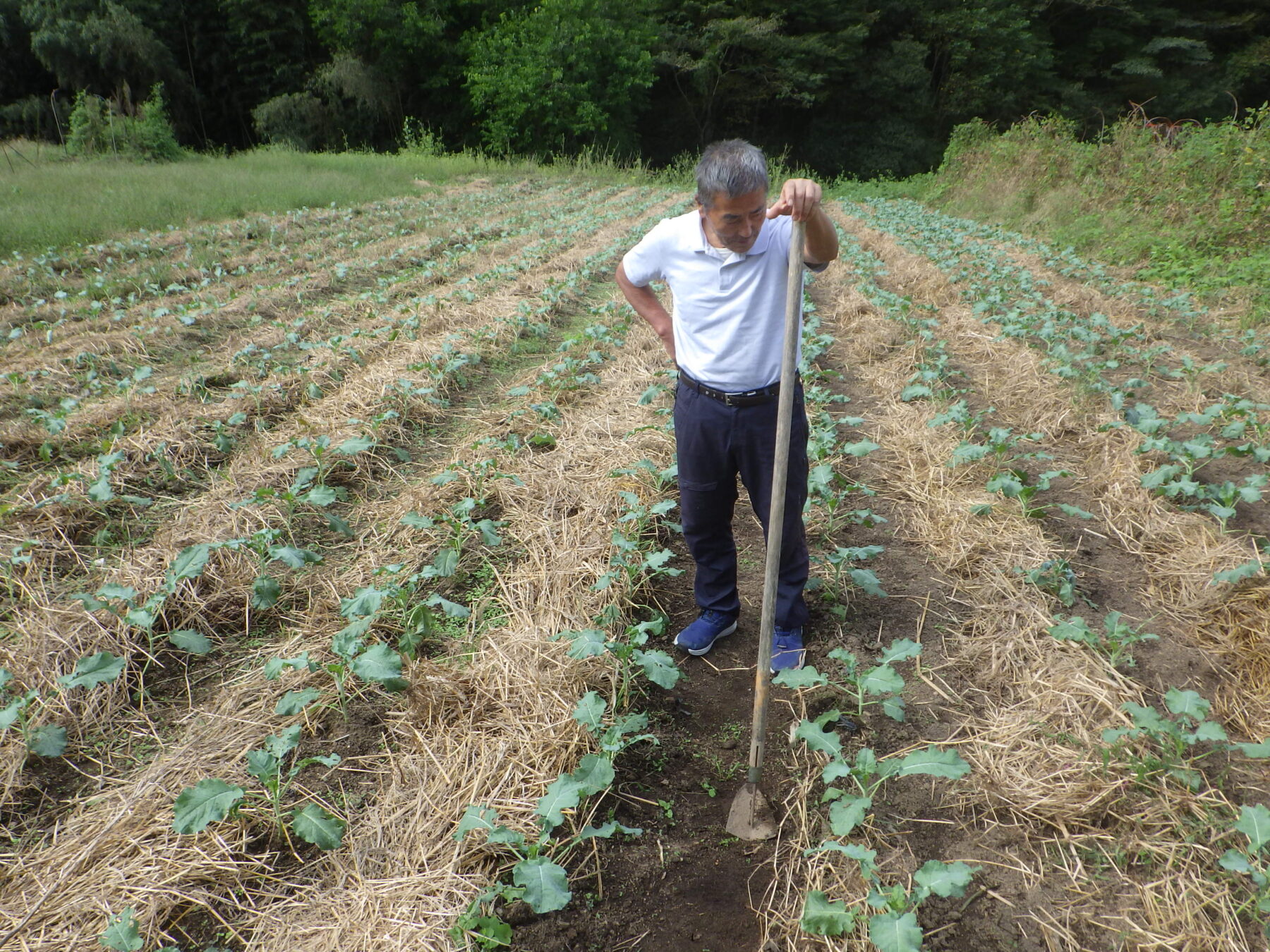Case Studies
Laboratory Report on EM-1 from Belarus
Japan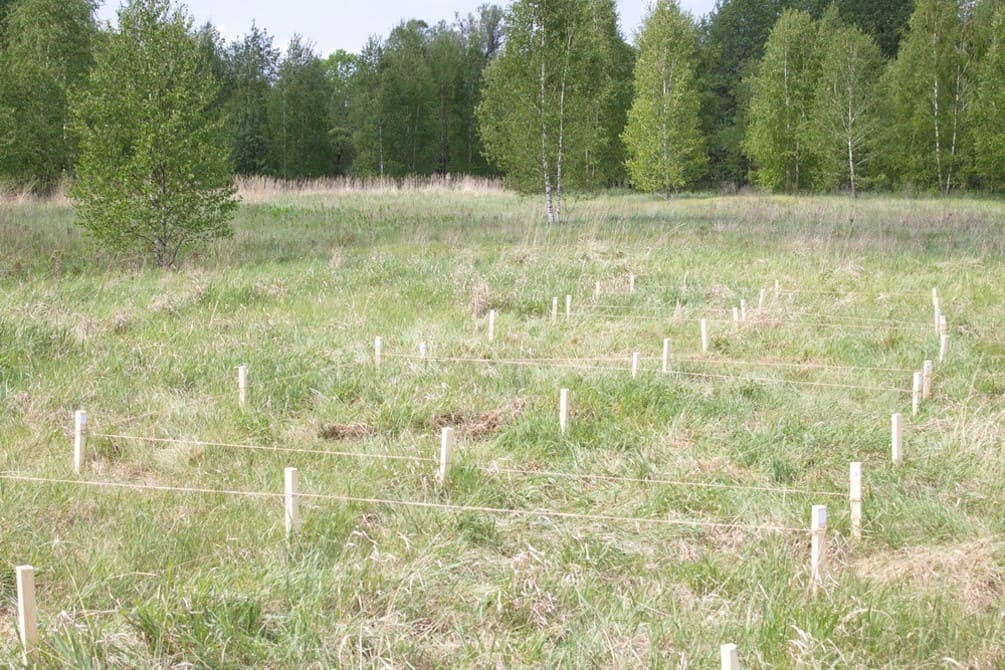
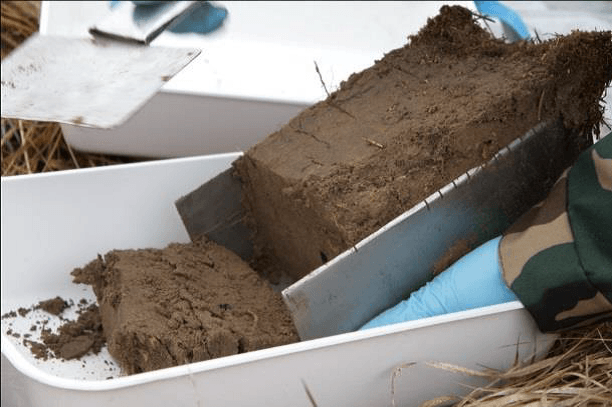
One-fifth of farming land was contaminated in the Republic of Belarus after the accident at the Chernobyl Nuclear Power Plant in 1986. The Institute of Radiobiology of the National Academy
of Science of Belarus (IRB) was established to investigate the possibilities for reducing radiation
exposure of humans, and during 1996 to 1999 IRB and EM Research Organization, Inc. (EMRO)
conducted a joint project about EM and its effect on radiation. With this cooperation, IRB and EMRO
restarted the joint research after the Fukushima nuclear accident in 2011.
Dr. Aleksander Nikitin of IRB heard the positive experiences of EM users around Fukushima
about effect of EM-1 on contaminated soil. Therefore, IRB started to investigate the possibilities of using EM-1to reduce transfer of cesium-137 to crops and presented their findings at 2014 Environmental Forum in Fukushima.
DOES EM-1 DECREASE RADIOACTIVITY?
According to the results of IRB’s past experiments, they knew that soil is a good shield for gamma
-ray: the deeper the source, the lower the dose rate above ground. Also, during the first few years after a nuclear accident, radioactive cesium has high solubility in water and is highly mobile; therefore, it
migrates relatively quickly down the soil profile. Thus, they made a hypothesis that spraying EM-1
accelerates the downward migration of radioactive cesium into the soil, which leads to reduction of
gamma rays at soil surfaces. To test this hypothesis, they organized a series of field and laboratory
experiments. In the field, they examined the behavior of Cesium-137 in natural conditions.
of Science of Belarus (IRB) was established to investigate the possibilities for reducing radiation
exposure of humans, and during 1996 to 1999 IRB and EM Research Organization, Inc. (EMRO)
conducted a joint project about EM and its effect on radiation. With this cooperation, IRB and EMRO
restarted the joint research after the Fukushima nuclear accident in 2011.
Dr. Aleksander Nikitin of IRB heard the positive experiences of EM users around Fukushima
about effect of EM-1 on contaminated soil. Therefore, IRB started to investigate the possibilities of using EM-1to reduce transfer of cesium-137 to crops and presented their findings at 2014 Environmental Forum in Fukushima.
DOES EM-1 DECREASE RADIOACTIVITY?
According to the results of IRB’s past experiments, they knew that soil is a good shield for gamma
-ray: the deeper the source, the lower the dose rate above ground. Also, during the first few years after a nuclear accident, radioactive cesium has high solubility in water and is highly mobile; therefore, it
migrates relatively quickly down the soil profile. Thus, they made a hypothesis that spraying EM-1
accelerates the downward migration of radioactive cesium into the soil, which leads to reduction of
gamma rays at soil surfaces. To test this hypothesis, they organized a series of field and laboratory
experiments. In the field, they examined the behavior of Cesium-137 in natural conditions.
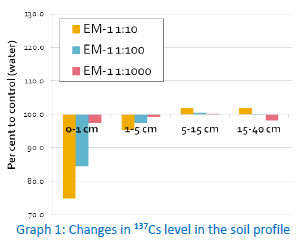
In the field experiment, they sprayed the soil sites with water and EM-1, 2 times per month (total 7
times). Each time, the amount was 2 liter per 1m 2. They used dilutions of EM-1: 1:1000, 1:100, 1:10
and pure water as a Control. The Graph 1 shows that after spraying the soil by EM-1, the activity of
cesium-137 in the top 0-1cm and 1-5cm decreased in comparison with the Control. The more
concentrated the EM-1 is, the greater the decrease in the cesium level. The most significant
changes could be observed in the 0-1cm surface soil layer.
times). Each time, the amount was 2 liter per 1m 2. They used dilutions of EM-1: 1:1000, 1:100, 1:10
and pure water as a Control. The Graph 1 shows that after spraying the soil by EM-1, the activity of
cesium-137 in the top 0-1cm and 1-5cm decreased in comparison with the Control. The more
concentrated the EM-1 is, the greater the decrease in the cesium level. The most significant
changes could be observed in the 0-1cm surface soil layer.
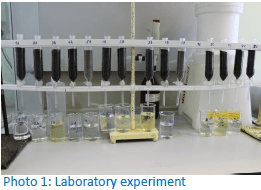
However, they failed to confirm the increase in cesium levels in the deeper layer of soil. They
thought that EM-1 accelerated the downward migration of cesium-137 into the soil and at the
same time, distributed it over a larger volume of soil. Therefore, it was not possible to measure the
cesium level accurately.
thought that EM-1 accelerated the downward migration of cesium-137 into the soil and at the
same time, distributed it over a larger volume of soil. Therefore, it was not possible to measure the
cesium level accurately.
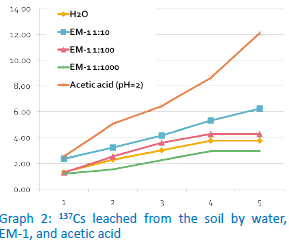
To test the hypothesis that EM-1 accelerates the vertical migration of cesium-137, they conducted a
laboratory experiment (Photo 1). They collected soil from the exclusion zone of Chernobyl Nuclear
PowerPlant. The soil wass mixed evenly and placed in columns (66g each). 100ml of solutions
were passed through these columns each time at 7 to 10 day intervals (total 5 times)
The solutions were: Water (Control), EM-1 dilution 1:10, EM-1 dilution 1:100, EM-1 dilution 1:1000, and acetic acid (pH=2). They added acetic acid because they thought increase in cesium migration was related to the relatively low pH level of EM-1. The cesim-137 level in the solutions that were
passed through the columns and collected in breakers were measured.
laboratory experiment (Photo 1). They collected soil from the exclusion zone of Chernobyl Nuclear
PowerPlant. The soil wass mixed evenly and placed in columns (66g each). 100ml of solutions
were passed through these columns each time at 7 to 10 day intervals (total 5 times)
The solutions were: Water (Control), EM-1 dilution 1:10, EM-1 dilution 1:100, EM-1 dilution 1:1000, and acetic acid (pH=2). They added acetic acid because they thought increase in cesium migration was related to the relatively low pH level of EM-1. The cesim-137 level in the solutions that were
passed through the columns and collected in breakers were measured.
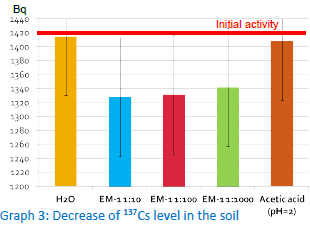
As expected, Graph 2 shows that treating the soil with a low pH (acetic acid) solution significantly
increased the migration of cesium-137. Acetic acid leached 3 times more cesium from the soil than
pure water. Weak EM-1 (1:1000) solution seems to reduce the mobility of radionuclides. However, with
a higher concentration of EM-1, the level of cesium-137 in filtrates increased. Vertical migration
of cesium-137 increased by 50% after treating the soil with a 10 fold dilution of EM-1. Contrary to their
expectation that soil treated by acetic acid would be the lowest, the level of cesium-137 that remained in the soil after the treatment showed unexpected result.
Graph 3 shows that the highest decrease of radioactive cesium was not in the acetic acid area,
increased the migration of cesium-137. Acetic acid leached 3 times more cesium from the soil than
pure water. Weak EM-1 (1:1000) solution seems to reduce the mobility of radionuclides. However, with
a higher concentration of EM-1, the level of cesium-137 in filtrates increased. Vertical migration
of cesium-137 increased by 50% after treating the soil with a 10 fold dilution of EM-1. Contrary to their
expectation that soil treated by acetic acid would be the lowest, the level of cesium-137 that remained in the soil after the treatment showed unexpected result.
Graph 3 shows that the highest decrease of radioactive cesium was not in the acetic acid area,
According to IRB’s current research, EM-1 increases the vertical migration of cesium-137, increases the removal of cesium in the top soil, and decreases dose of radiation from the soil and reduce external exposure dose. Also, it showed that the potential of EM-1 to reduce cesium contamination although the mechanisms are unknown. They concluded that EM Technology is effective measure against external exposure to radioactive cesium isotopes in soil released by nuclear accidents.
-----------------------------------------------------
Reference:
Dr. Aleksander Nikitin, Institute of Radiobiology
National Academy of Science of Belarus
-----------------------------------------------------
Reference:
Dr. Aleksander Nikitin, Institute of Radiobiology
National Academy of Science of Belarus


